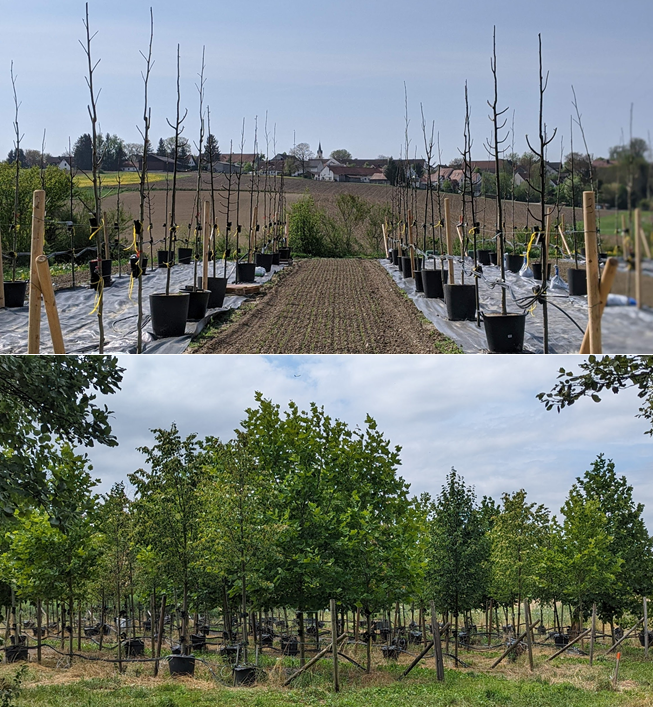ClimateContainerTrees - Trees in Containers as urban climatic effective measure for the adaption to climate change
All urban climate change adaptation strategies call for the increased use of vegetation in cities. This demand is justified by the known positive climate effects, such as those of large parks and street trees. In urban planning, therefore, there is a demand to reserve as many and large areas as possible for tree planting and as public, green open spaces. In the Bavarian conurbations, however, this demand is countered by enormous population growth, so that green spaces come under pressure through redensification or highly dense construction methods. In addition, due to the underground technical infrastructure such as pipes, underground railways, underground car parks etc., it is often hardly possible in many urban situations to plant trees or provide adequate root areas so that they can develop well in the long term. A possible solution here is the use of trees in planters. This is currently being used more and more in public spaces and is also being discussed in architecture as an option for intensive greening of buildings. However, trees in plant pots have an extremely limited root space, which also limits the development of the tree crown. In addition, trees and especially their roots are exposed to extreme, often critical growth conditions such as large temperature fluctuations, severe frost or water shortages, which affects growth and ecosystem performance. The urban climatic effect of shade and evaporation must therefore be assessed differently from that of trees growing in the soil.
The research project therefore aims to close existing gaps in our knowledge of the climatic effects and growth conditions of trees in planters in order to plant trees in planters professionally in the future and to be able to use them sustainably as a measure effective in urban climates. The following central questions arise:
Growth Factors:
- Which requirements in terms of vegetation and technic must be fulfilled that trees can longterm develop well in containers and fulfill demands in terms of microclimate and design?
- Which technics (sort of container, substrate, watering technic) and tree species are suitable for different site conditions?
Growth and Ecosystem Services
- How can the microclimatic effects of trees in containers be recorded and modelled?
- Which differences regarding growth and ecosystem services of the studied tree species can be found depending on single variables (sort of container, substrate, watering technic)?
Design and Implementation
- Which aesthetic spatial impact and sojourn quality do open areas and green architecturals provide, which can be designed and implemented based on the developed methodic and technical basis?
- How can they be linked synergetic and aesthetic with other measures of climate change adaptation (e.g. rainwater management/flood protection, grey water recycling) to aim for greatest sustainability and resilience for cities?
The results will be summarized in a guideline which allows Bavarian cities and municipalities to use trees in containers purposefully and sustainable as a measure for the adapation to climate change and increase of biodiversity in dense urban situations when conventional plantings are not possible.
